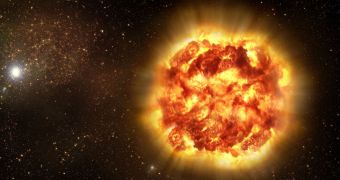Experts working with the Panoramic Survey Telescope & Rapid Response System (Pan-STARR) announce the discovery of two new supernovae. These are massive explosions that occur when a star reaches the end of its burning cycle, and gets violently destroyed.
When a massive precursor star is involved, this usually leads to the formation of a black hole or neutron star, from the collapsed stellar core. The outer layers of the stellar atmosphere are ejected into space, and can go on to form a nebula later on.
Supernova events are the brightest – and some of the most violent – events in the Universe. They can briefly outshine entire galaxies, as seen from our vantage point here on Earth. But there are some events of this type that break our current understanding of how supernovae appear.
There are two main ways for this to happen – the collapse of a massive star, or a white dwarf star blowing up because it accreted material from a neighbor well beyond the Chandrasekhar limit. But recent studies are also revealing a third type of supernova.
The first object that was neither a collapse or a thermonuclear explosion was SN 2005ap. Recently, the Pan-STARR collaboration found two more ultra-luminous supernovae, called PS1-10ky and PS1-10awh. The telescope only captured the full light curve for the second event.
Harvard-Smithsonian Center for Astrophysics (CfA) experts recently combined the two datasets, in a study that was led by expert Laura Chomiuk. This allowed the team to gain a deeper understanding of how objects in this class behave, Universe Today reports.
Interestingly, the investigators were also able to determine how the energy the supernovae released was distributed as the explosions were unfolding. This was made possible by the fact that the telescope performs observations in multiple filters.
Spectroscopic data on the same supernova events were provided by the Gemini Telescope. The study revealed that the two new events were very similar to older ones, including SN 2010gx and SCP 06F6.
One of the hypothesis currently being investigated to explain these events holds that the precursors for these explosions may be massive Luminous Blue Variable stars. Just before blowing up, they release vast amounts of material from their atmosphere.
If that material travels through a relatively dense medium, such as the gas in a stellar nursery, for example, than that could help explain some of the characteristics that experts are observing.
This idea can be tested by using radio telescopes to look for emissions produced in the hydrogen gas by shock waves generated during the explosions. However, there are other possible explanations that scientists are considering as well.

 14 DAY TRIAL //
14 DAY TRIAL //